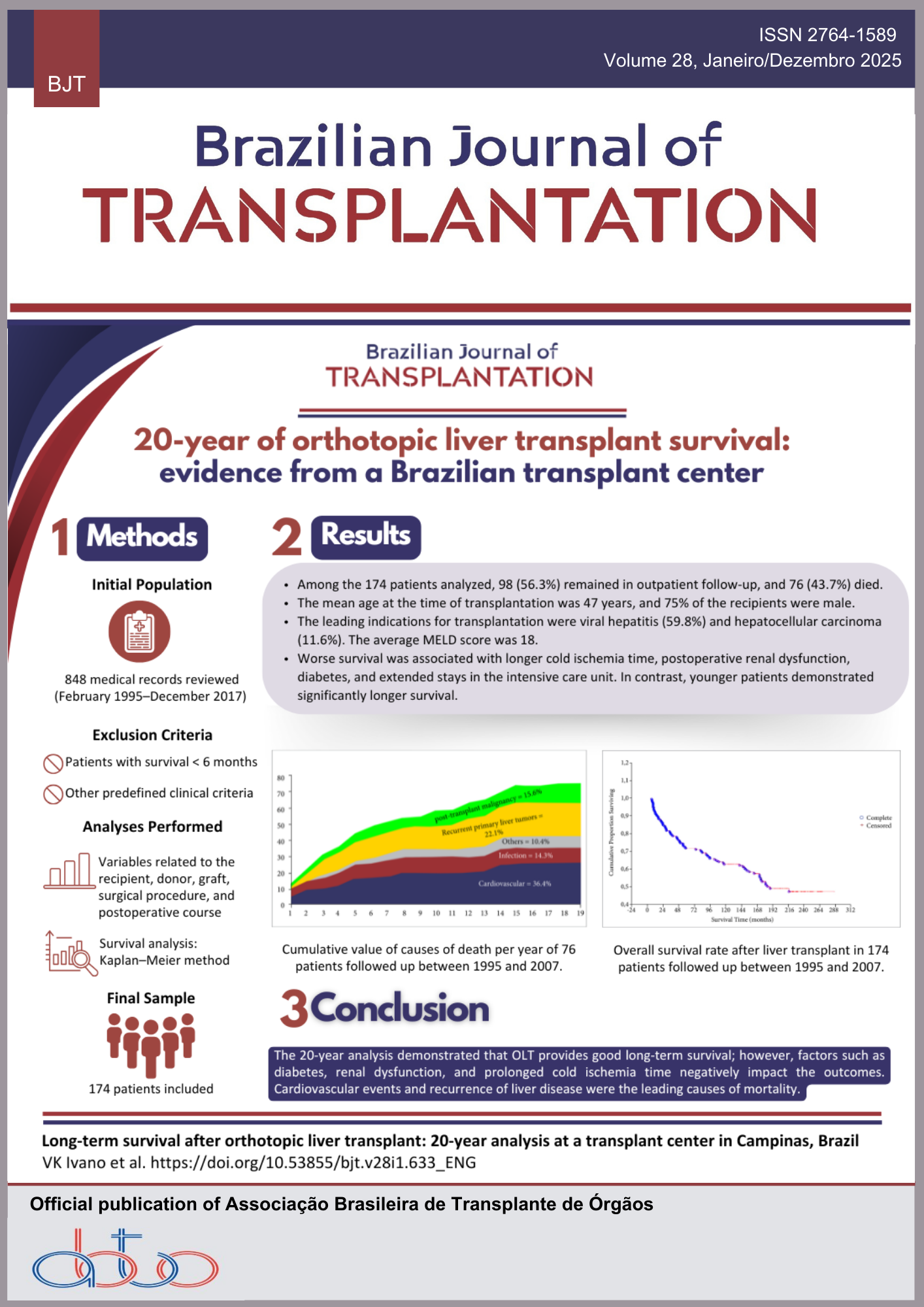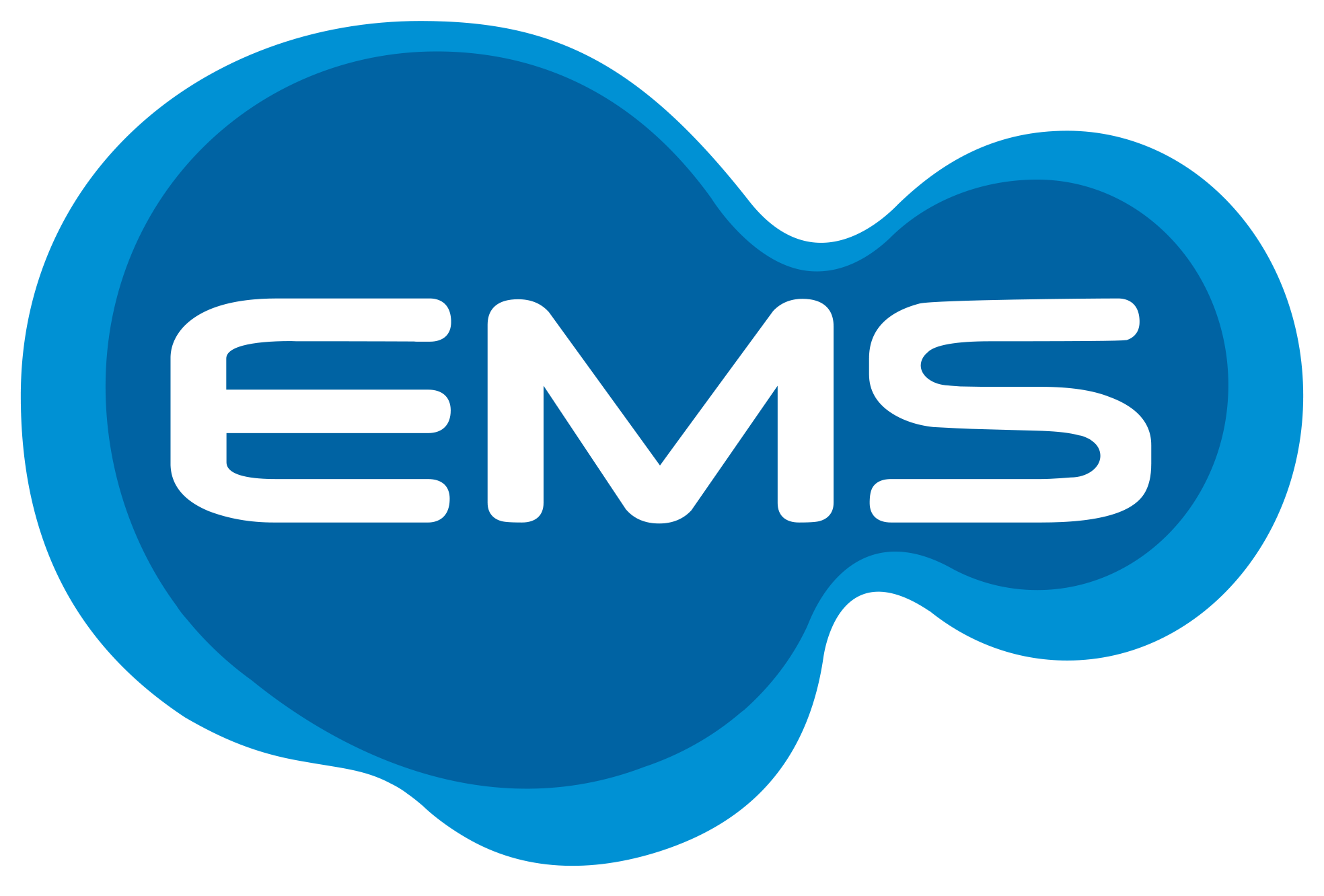Safety and Efficacy of Direct-Acting Antivirals in the Treatment of Hepatitis C in Transplant Recipients
Keywords:
Hepatitis C, Liver Transplantation, Biological Treatment, Direct-Acting AntiviralsAbstract
Objectives: To perform a comparative analysis, evaluating the efficacy and safety profiles discerningly in a cohort of liver transplant recipients and non-liver transplant recipients infected with hepatitis C and treated with direct-acting antivirals (DAA). Methods: This study is a real-life retrospective, observational analysis of individuals with chronic hepatitis C who were treated with DAA. During this period, 990 patients diagnosed with hepatitis C received DAA therapy, 165 of whom had undergone liver transplantation. Exclusion criteria included HIV-positive patients and those without a sustained virologic response (SVR) assessment. Results: The SVR was 95.8 and 95.6% in liver transplant recipients and nonrecipients, respectively (p = 0.94). The majority of patients were treated with sofosbuvir (SOF) in combination with daclatasvir, simeprevir, and ledipasvir. Ribavirin (RBV) was co-administered to 43.2% of patients, resulting in no improvement in SVR and an increase in adverse events. Treatment of genotype 2 patients with SOF and RBV and genotype 3 patients with SOF, interferon, and RBV for only 12 weeks showed suboptimal efficacy (89.5 and 83.3%), respectively. Conclusion: The treatment of hepatitis C with DAA is as effective and safe in liver transplant patients as in non-liver transplant patients, and the prescription of RBV is inadvisable due to the increase in serious adverse events without improvement in SVR.
Downloads
References
1. Pawlotsky JM, Negro F, Aghemo A, Berenguer M, Dalgard O, Dusheiko G, et al. EASL recommendations on treatment of hepatitis C: final update of the series. J Hepatol, 2020; 73(5): 1170-1218. https://doi.org/10.1016/j.jhep.2020.08.018
2. Gane EJ, Portmann BC, Naoumov NV, Smith HM, Underhill JA, Donaldson PT, et al. Longterm outcome of hepatitis C infection after liver transplantation. N Engl J Med, 1996; 334: 815-821. https://doi.org/10.1056/nejm199603283341302
3. Garcia JHP, Araujo Filho AH, Braga LLBC, Viana CFG, Rocha TDS, Pereira KB. Pegylated interferon and ribavirin for treatment of recurrent hepatitis C after liver transplantation: a single-liver transplant center experience in Brazil. Arq Gastroenterol, 2015; 52: 216-21. https://doi.org/10.1590/S0004-28032015000300012
4. Burton JR, O’Leary JG, Verna EC, Saxena V, Dodge JL, Stravitz RT, et al. A US multicenter study of hepatitis C treatment of liver transplant recipients with protease-inhibitor triple therapy. J Hepatol, 2014; 61: 508-14. https://doi.org/10.1016/j.jhep.2014.04.037
5. Lobato CMO, Balassiano N, Hyppolito EB, Sanchez-Lermen RLP, Signorelli IV, Nicacio MYT, et al. Effectiveness of firstwave protease inhibitors in hepatitis C virus genotype 1 infection: a multicenter study in Brazil. Rev Soc Bras Med Trop, 2018; 51:14-20. https://doi.org/10.1590/0037-8682-0279-2017
6. Wiesner RH, Sorrell MF, Villamil FG, Balan V, Berenguer MC, Brown, RS. Report of the First International Liver Transplantation Society Expert Panel Consensus Conference on Liver Transplantation and Hepatitis C. Liver Transpl, 2003; 9: S1-9. https://doi.org/10.1053/jlts.2003.50268
7. Berenguer MC. Systematic review of the treatment of established recurrent hepatitis C with pegylated interferon in combination with ribavirin. J Hepatol, 2008; 49: 274-87. https://doi.org/10.1016/j.jhep.2008.05.002
8. D’Ambrosio R, Degasperi E, Colombo MG, Aghemo A. Direct-acting antivirals: the endgame for hepatitis C? Curr Opin Virol, 2017; 24: 31-7. https://doi.org/10.1016/j.coviro.2017.03.017
9. Blach S, Terrault NA, Tacke F, Gamkrelidze I, Craxi A, Tanaka J, et al. Global change in hepatitis C virus prevalence and cascade of care between 2015 and 2020: a modelling study. Lancet Gastroenterol Hepatol 2022; 7(5): 396-415. https://doi.org/10.1016/S2468-1253(21)00472-6
10. World Medical Association. World Medical Association Declaration of Helsinki: ethical principles for medical research involving human subjects. JAMA, 2013; 310(20): 2191-4. https://doi.org/10.1001/jama.2013.281053
11. Abboud OI, Abbud-Filho M, Abdramanov K, Abdulla S, Abraham GP, Abueva AV, et al. The declaration of Istanbul on organ trafficking and transplant tourism. Clin J Am Soc Nephrol, 2008; 3:1227-31. https://doi.org/10.2215/CJN.03320708
12. Forman LM, Lewis JD, Berlin JA, Feldman HI, Lucey MR. The association between hepatitis C infection and survival after orthotopic liver transplantation. Gastroenterology, 2002; 122: 889-6. https://doi.org/10.1053/gast.2002.32418
13. Gane EJ. The natural history of recurrent hepatitis C and what influences this. Liver Transpl, 2008; 14 Suppl 2: S36-S44. https://doi.org/10.1002/lt.21646
14. European Association for the Study of the Liver. EASL Practice Guidelines. EASL recommendations on treatment of hepatitis C: final update of the series. J Hepatol, 2020; 73(5):1170-1218. https://doi.org/10.1016/j.jhep.2020.08.018
15. Lobato C, Codes L, Silva G, Souza A, Coelho H, Pedroso M, et al. Direct antiviral therapy for treatment of hepatitis C: a realworld study from Brazil. Ann Hepatol, 2019;18(6): 849-54. https://doi.org/10.1016/j.aohep.2019.08.001
16. Brasil. Ministério da Saúde. Brasília (DF): MS; 2015.
17. Huang JF, Huang CF, Yeh ML, Dai CY, Yu ML, Chuang WL, et al. Updates in the management and treatment of HCV genotype 3, what are the remaining challenges? Expert Rev Anti Infect Ther, 2018; 16: 907-12. https://doi.org/10.1080/14787210.2018.1544492
18. Brasil. Ministério da Saúde. Protocolo clínico e guia terapêutico da hepatite C e coinfecções. Brasília (DF): MS; 2020.
19. Ayoub WS, Tran TT. Regimens for the hepatitis C treatment-naive patient. Clin Liver Dis, 2015; 19(4): 619-27. https://doi.org/10.1016/j.cld.2015.06.003
20. Silva EU, Batista AD, Lopes EP de A, Filgueira NA, de Carvalho BT, Santos JC, et al. A real-life study on the impact of directacting antivirals in the treatment of chronic hepatitis C in liver transplant recipients at two university centers in Northeastern Brazil. Rev Inst Med trop S Paulo, 2021; 63: e6. https://doi.org/10.1590/S1678-9946202163006
21. Mutimer D. Pre- and post-transplant treatment of viral hepatitis C. Dig Dis, 2017; 35(4): 347-50. https://doi.org/10.1159/000456586
22. Booth IA, Clark JE, LaMattina JC, Barth RN, Haririan A, Ravichandran BR. The impact of treatment delay on hepatitis C liver transplant outcomes. J Pharm Pract, 2023; 36(2): 264-70. https://doi.org/10.1177/08971900211034261
23. Brasil. Ministério da Saúde. Plano de eliminação da hepatite C no Brasil. Brasília (DF): MS; 2018.
Downloads
Published
How to Cite
Issue
Section
License
Copyright (c) 2025 Elodie Bomfim Hyppolito, Roberto da Justa Pires Neto, Larissa Peixoto Teixeira , Lara Martins Sampaio Marques, Vitória Bezerra de Alencar, Karla Brandão Pereira, Lívia Melo Carone Linhares, Antônio Haroldo Araújo Filho, Cyntia Ferreira Gomes Viana, Tarciso Daniel dos Santos Rocha, Clébia Azevedo de Lima, Anderson Fuentes Ferreira, Alberto Novaes Ramos Júnior, José Huygens Parente Garcia

This work is licensed under a Creative Commons Attribution 4.0 International License.









